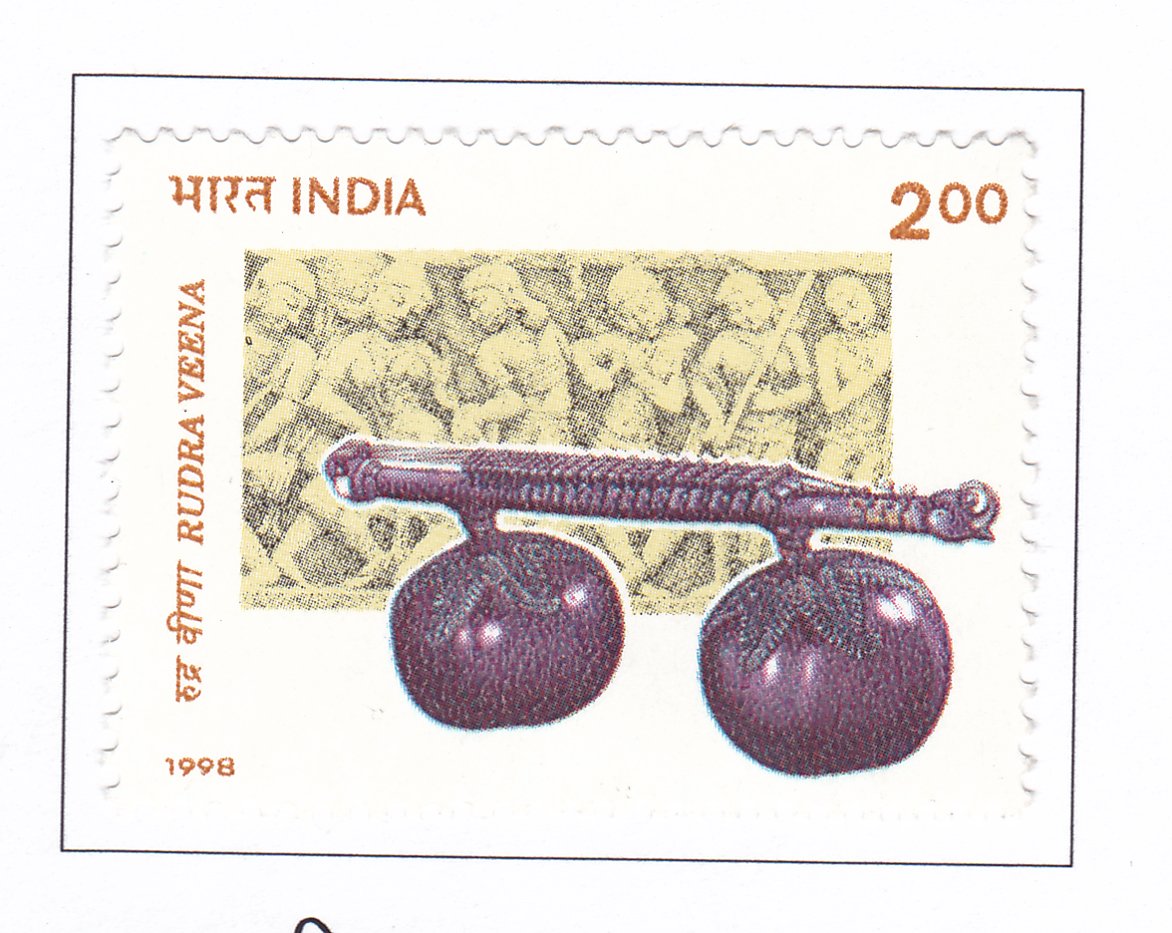Rudra Veena (stringed instrument)

Technical Data
| Stamp Set | Indian Musical Instruments |
|---|---|
| Date of Issue | December 29, 1998 |
| Denomination | Rs. 2 |
| Quantity | 700,000 |
| Perforation | comb 13½ x 13 |
| Printer | Security Printing Press, Nashik |
| Watermark | No Watermark |
| Colors | Multicolor |
| Catalog Codes |
Michel IN 1663 Stamp Number IN 1721 Yvert et Tellier IN 1428 Stanley Gibbons IN 1826 |
| Themes | Musical Instruments |
Table of Contents
Rudra Veena
Overview:
The Rudra Veena is an ancient and revered stringed instrument in Indian classical music, known for its deep, resonant sound and its significant role in Carnatic music tradition. It is often associated with the legendary composer and musician, Rudra, after whom the instrument is named.
Characteristics:
- Structure:
- Body: The Rudra Veena typically has a large, elongated resonator made from a single piece of wood. It is often made from a variety of hardwoods such as jackfruit, rosewood, or sandalwood.
- Neck: The instrument has a long neck that extends from the resonator, usually adorned with decorative inlays.
- Strings: It generally features seven strings – four main strings and three auxiliary strings. The main strings are played, while the auxiliary strings provide resonance and tonal support.
- Playing Technique:
- Position: The Rudra Veena is played while seated, with the instrument resting on the player’s lap. The player uses a combination of fingers and a plectrum to pluck the strings.
- Technique: The instrument is played by plucking the strings and using a variety of techniques to produce different tonal qualities. The player also uses slides and vibratos to enhance the musical expression.
- Historical Significance:
- Origins: The Rudra Veena is one of the oldest stringed instruments in India, with origins that date back several centuries. It is mentioned in ancient texts such as the “Natya Shastra,” a classical treatise on performing arts.
- Role in Carnatic Music: The Rudra Veena holds a prominent place in Carnatic music, which is one of the two main traditions of Indian classical music. It is known for its rich and profound sound, which complements the vocal performances in Carnatic music.
- Cultural Importance:
- Symbolism: The Rudra Veena is often associated with spirituality and devotion. Its deep and meditative tones are believed to connect the player and listener to higher realms of consciousness.
- Legacy: Despite its ancient origins, the Rudra Veena continues to be an important instrument in Indian classical music. It is played by a select group of musicians who preserve and propagate its traditional techniques and repertoire.
Commemorative Stamp Design:
- Visual Elements: The stamp featuring the Rudra Veena includes a detailed depiction of the instrument, highlighting its intricate craftsmanship and elegant design.
- Background: The background of the stamp may feature elements from ancient Indian art or stone carvings, emphasizing the instrument’s historical and cultural significance.
Educational Value:
- Understanding Tradition: The stamp provides insight into the rich tradition of Indian classical music and the role of the Rudra Veena in this tradition.
- Promoting Heritage: By commemorating the Rudra Veena, the stamp helps promote awareness and appreciation for India’s musical heritage and the preservation of traditional instruments.
The Rudra Veena stamp celebrates the enduring legacy of this ancient instrument and its contribution to India’s classical music tradition.
